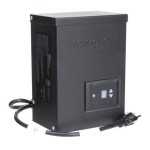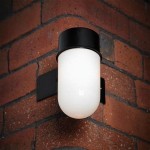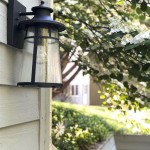How to Paint Outdoor Plastic Pots
Outdoor plastic pots are a popular choice for gardeners due to their affordability, durability, and variety of styles and colors. However, the bright, often garish, hues of many plastic pots can clash with plant colors and garden aesthetics. Transforming these pots with a fresh coat of paint offers a simple and cost-effective way to enhance outdoor spaces.
Painting plastic pots requires specific techniques and materials to ensure a long-lasting and visually appealing finish. This guide provides a comprehensive overview of the process, covering essential steps and tips for successful outdoor plastic pot painting projects.
Preparation: Key to Success
The success of any painting project hinges on proper preparation. Neglecting this crucial stage can lead to uneven paint application, poor adhesion, and premature peeling.
Here are the essential steps to prepare plastic pots for painting:
- Clean the pots thoroughly: Use a mild soapy solution and a scrub brush to remove dirt, grime, and any residues from previous coatings.
- Rinse pots with water: Ensure all soap residue is removed, as it can interfere with paint adhesion.
- Dry completely: Allow the pots to dry completely before proceeding to the next step.
- Sand the surface: Lightly sand the exterior of the pots with fine-grit sandpaper to create a rough surface for better paint adhesion.
- Clean dust and debris: Use a damp cloth or a vacuum cleaner to remove sanding dust and debris from the pots.
Choosing the Right Paint
Selecting the appropriate paint is paramount to achieve a durable and aesthetically pleasing finish on outdoor plastic pots.
Here are key considerations for choosing the right paint:
- Acrylic paint: This type of paint is water-based, dries quickly, and offers excellent adhesion to various surfaces, including plastic. It is also readily available in a wide range of colors.
- Outdoor paint: This paint formulation is designed to withstand harsh weather conditions, including sun exposure, rain, and temperature fluctuations.
- Primer: Using a primer specifically designed for plastic surfaces is highly recommended. It creates a bonding layer between the plastic and the paint, enhancing adhesion and preventing peeling.
- Spray paint: For large pots or intricate designs, spray paint can be a convenient and efficient option. Choose a high-quality outdoor spray paint with good adhesion properties.
Painting Techniques
Following the appropriate painting techniques ensures a professional-looking and long-lasting finish on outdoor plastic pots.
Here's a step-by-step guide to painting outdoor plastic pots:
- Apply a primer: Use a brush or roller to apply a thin, even coat of primer to the entire surface of the pot. Allow the primer to dry completely before proceeding to the next step.
- Apply paint in thin coats: Apply two to three thin coats of paint, allowing each coat to dry completely before applying the next. Avoid applying thick coats, as they may crack or peel.
- Use appropriate tools: For small pots, a brush may be sufficient. Larger pots may require a roller or spray paint.
- Let the paint cure: Allow the paint to cure for at least 24 hours before using the pots for planting. This ensures that the paint has fully hardened and is resistant to damage.
By carefully following these steps and using the appropriate materials, you can transform outdoor plastic pots into stylish and durable accents for your garden or outdoor space.

How To Spray Paint Plastic Planters In 7 Easy Steps Painting

Painting Plastic Pots To Look Like Cement The Honeycomb Home

How To Make A Plastic Planter Pot Look Like Aged Stone Savvy Apron

How To Spray Paint Plastic Planters Diy Summer Project

Painting Plastic Pots To Look Like Cement The Honeycomb Home

Painting Plastic Pots To Look Like Cement The Honeycomb Home

How To Spray Paint Plastic Planters Diy Summer Project

How To Spray Paint Plastic Planters In 7 Easy Steps

How To Spray Paint Plastic Plant Pots

Painted Plastic Flower Pot
Related Posts







